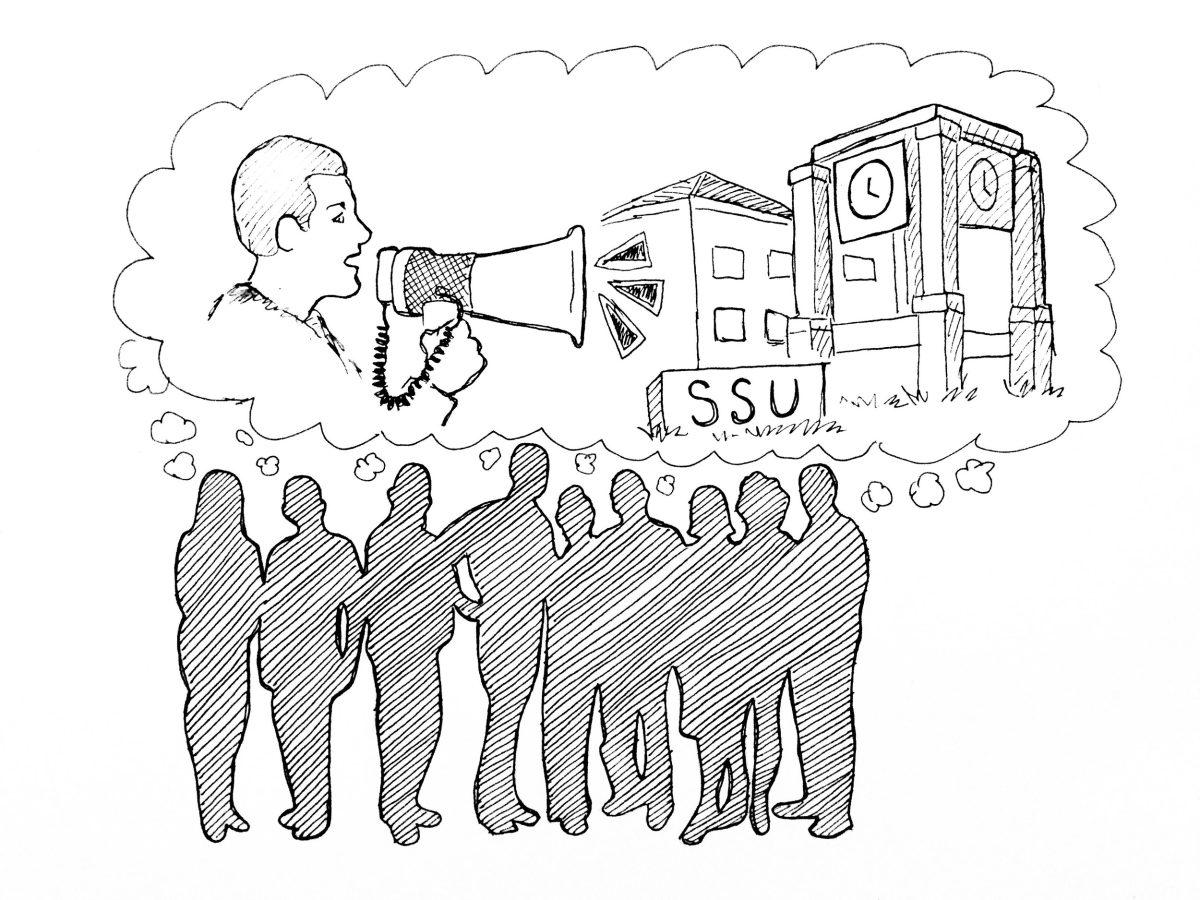STAR // Julia Albo
Sonoma State University has seen its share of changes and improvements over the years, with the addition of the Student Center, International Hall and most recently, LoboVision — which proved to be a center of controversy for many students.
Decisions on college campuses are often made behind closed doors by administrators who lack the insight students have when it comes to what a college campus needs. Representation and transparency are two words often heard together when discussing the politics of higher education — and for good reason.
Earlier in the spring semester, many students questioned who makes the decisions to bring something like LoboVision to campus and why it was necessary. Or in other words, who is at the forefront of making decisions that affect students’ education?
Do students truly have a say in what happens at Sonoma State or are they at the mercy of administrators when it comes to changes to campus?
Sonoma State is made of multiple committees intended to make the decisions that affect students. Those committees include the Student Center Board of Advisers, the Campus Reengineering Committee and the Campus Planning Committee. All of these committees have student representatives who play a role in decision makings. In hindsight, having a few select students chosen to sit on these decision-making boards seems like an effective way to represent the voice of the student body.
But can a small number of students truly reflect the needs and wants of a student population of more than 9,000? Probably not. And how can campus and academic life be improved with such a small number of student representatives?
The caveat with the university’s process of including such few students on these boards is that these students are expected to talk to their fellow students about what’s going on around campus.
In recent years, Sonoma State students have expressed discontent with many of the changes implemented, including the Green Music Center and the financial implications on the university, the Student Center and even the reserved parking lot next to the Student Center. In our view, a minimal effort was made to reach out to students in regard to these changes.
It’s understandable to ask all students be included in the decisions being made on the campus — but from the other side of the spectrum, do students at Sonoma State actually care about the campus and the decisions being made? Are students simply apathetic to the issues that surround Sonoma State?
College students are often quick to voice anger or discontent when it comes to things that affect their lives and education. But when given the opportunity to change things at their university, do students back down and shy away from being a part of the decision-making process or would students actually step up and bring change to their campus?
When it comes to LoboVision, many students became aware of its existence the day it was installed on to the wall of the Recreation Center.
Though this change to campus may seem small, students would still like to be included in the discussion before things like LoboVision come to campus.
Transparency and representation are the keys to a united campus and the STAR asks administrators to consult more students — if not the entire campus — before decisions that affect students are made. It’s also important to remember that the student body is constantly changing.
If a decision is made in one year for a change on campus, two years later, when it’s finally implemented, roughly half the student body may have no idea what is going on.
With so many students unaware of things going on at Sonoma State, it’s imperative students’ voices be represented andstudents be kept informed.
We hope things can become more transparent with the new university president alongside our new Associated Students president.



































